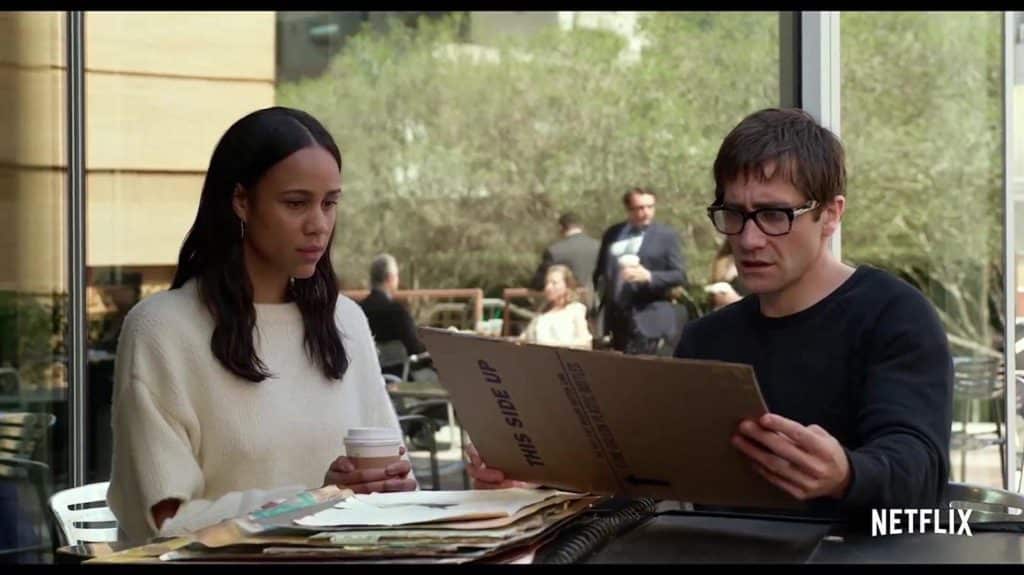Read also:
How to Watch FX Live Without CableHow To Watch AMC Without CableHow to Watch ABC Without CableHow to Watch Paramount Network Without CableFrom hot messes to hot stresses to what felt like a vacation in comparison, my fourth day at Sundance only consisted of two movies.
Yes, two. I’m very sorry, but I trust that the holy spirit of Robert Redford will allow me to repent. But it’s nice to have a pair of movies that are opposite sides of the same coin, and with Share and Velvet Buzzsaw, just two features felt like enough and not much… for better or for worse.
Share was first, written and directed by Pippa Bianco from her 2015 short film of the same name. It’s a solid debut that not only speaks to the growing acceptance of social media in movies, but it also says a lot about the techno trend that’s underlined Sundance for the last few years. From Eighth Grade to Ingrid Goes West and from Searching to Assassination Nation, Bianco’s contribution to the pantheon is easily the most low-key.
We follow Mandy (Rhianne Barreto), a 16-year-old who, one day, gets a barrage of messages about a particular video. It’s grainy; it’s vertical; it’s hard to make out. But in that video is a girl that looks like Mandy strung out on the floor with a teenage boy pulling down her pants as an unholy Greek choir of male chuckles arise. Then the video cuts, but everyone’s seen it. No one will fess up to recording, and her guyfriend A. J. (Nicholas Galitzine) seems especially distant all of a sudden. She does, however, have her friends Dylan (Charlie Plummer, Lean on Pete) and Jenna (Lovie Simone, who’s also in the festival’s Selah and the Spades).
It’s a quiet hour and a half that could have been crass. What we get instead is something that replaces pandering ethics with respect, with an LCD-drenched aesthetic that’s as unassuming as it is omnipresent. As characters sit lit by screens and electronics, there’s something oddly impressionistic in how the film presents itself, only with a constant tether to reality that plays against the sequences of silence. It isn’t a particularly “new” commentary and it has some pacing problems, but it’s an effective piece that blurs the line between anxiety and ennui.

However, those emotions didn’t seem nearly pointed enough in Velvet Buzzsaw. Dan Gilroy’s third directorial effort after Nightcrawler and Roman J. Israel, Esq. posits art to be a force of nature unto itself. It really is living, breathing wallpaper, but for the crowds that surround it, it’s little more than an extension of commercialization. Gilroy takes what should be a fascinating look at the perversion of art and how Art itself will get its revenge, but in the end, Gilroy can’t find the right tone.
If Freddy Krueger was a personification of art overtaking life in New Nightmare, Art is his more elusive cousin in Velvet Buzzsaw. Art’s targets are the people that claim to love it: critic Morf Vandewalt (Jake Gyllenhaal), his regular flirt Josephina (Zawe Ashton), museum director Rhodora (Rene Russo), and curator Gretchen (Toni Collette). Even museum worker Bryson (Billy Magnussen) seems to be on Art’s hit list. These characters are more pollutants than real people, yet they talk too similarly and instead pass for the easy satire that Art himself would thumb his nose at.
Ironically enough, one of the film’s best lines also function as an unintended autocriqitue. “Ideas germinate, but germination implies birth. Once the art is born, the ideas die,” a collector (John Malkovich) tells someone as they walk into an empty exhibit space. Then he gives a glance: “You’ve just walked into a slaughterhouse.”
Yet therein lies the biggest issue with the film. Gilroy is so unsure of his tone here, having made a film that runs on the fumes of a handful of tantalizing ideas that go nowhere really, and that’s because the film doesn’t give them anywhere to go. It’s so scared of letting its ideas die that very few things germinate past the shape of a basic proposition. Gilroy doesn’t take Velvet Buzzsaw too seriously, which is fine, but his approach is also far too sterile at times to play into its camp inspirations. Beyond a few good jokes and the reliability of its cast, the picture lacks the self-reflexivity to plumb its art/commercialization commentary.